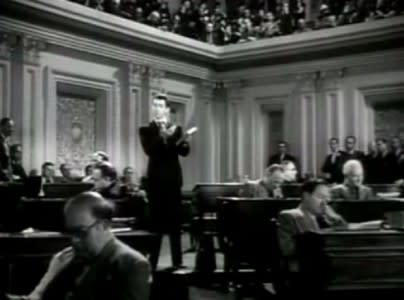Why the constitutional option on the filibuster matters
Majority leader Harry Reid is edging closer to ending the filibuster in the Senate for some types of votes. So why does the nuclear or constitutional option about the filibuster matter so much?
According to reports on Wednesday, Reid and Democrats in the Senate will huddle this week to decide on a procedural move to kill the filibuster for executive-branch nominations by ensuring there is a time limit on debate on the floor along with a time limit on votes.
“I’m going to have a caucus on this Thursday and I think … by the time the day’s out you’ll have a better idea on what we’re going to do on this,” Reid told reporters on Tuesday afternoon.
The filibuster matters because it allows the minority party in the Senate to block votes on executive and judicial nominees, and legislation, by forcing 60 of the 100 Senate members to agree to end a debate.
Since the Democrats don’t control 60 Senate votes, the Republicans have been able to block nominations or get concessions without having a Senate majority.
The Democrats are upset with Republican resistance to several nominations made by President Barack Obama to head executive agencies.
A key point appears to be a potential “silent” filibuster of appointments to the National Labor Relations Board. Three of the five NLRB members were recess appointments by President Obama.
President Obama’s recess-appointment tactic as a maneuver around the Senate is heading to the Supreme Court in its next term, which starts in October.
The Supreme Court is also on the sidelines, for the most part, in the filibuster battle, since the Constitution specifies that the House and Senate establish their own rules.
A court challenge to the filibuster from Common Cause was shot down last December in the U.S. District Court for the District of Columbia.
“The court is firmly convinced that to intrude into this area would offend the separation of powers on which the Constitution rests,” Judge Emmet Sullivan said. “Nowhere does the Constitution contain express requirements regarding the proper length of, or method for, the Senate to debate proposed legislation.”
Common Cause has appealed the decision.
In fact, the House also had the filibuster at one time, but it ended its use in 1842.
The Senate battle has been brewing since January, when Reid and Minority Leader Mitch McConnell reached a compromise on filibuster rules.
The nomination of Defense Secretary Chuck Hagel was then subject to a filibuster, which ruffled a lot of feathers.
The Senate eventually voted 71-27 to end the “silent filibuster” over Hagel’s appointment that blocked him from getting a confirmation vote.
The move was unprecedented for a high-level cabinet nominee and came just little more than a month after Democrats and Republicans reached that filibuster reform deal.
Under the current Senate rules, a cloture vote is needed after some members signal their intent to filibuster a procedure. At least 60 senators must agree to limit floor debate and overcome the filibuster.
Before the January deal, Reid hinted he could use the “nuclear option” or “constitutional option” to drastically change filibuster rules in the current Congress, on a strict party-line vote.
Both options would kill the filibuster as a tool in the Senate, by forcing a majority vote to amend the Senate’s rules under highly unusual circumstances.
The nuclear option refers to a rewriting of the Senate rulebook on the first official day of business for a new Congress; the constitutional option would see a floor vote taken at any time to create a new standing rule that would end filibustering—until a new rule was approved to allow it.
The old-school Jimmy Stewart filibuster is known as a “talking filibuster,” while the current process is called the “silent filibuster,” since a senator indicates behind closed doors to his or her leader their intent to block a bill.
As leverage, Republican leaders have stressed that things could change in 2014 and the Democrats could lose big if they kill the filibuster and become the new minority party in the Senate.
The theory is that historically, the party that has won the White House and controlled the Senate fares poorly in midterm elections, and it could be the Democrats that benefit in the long run from rules that give a minority party the power of the filibuster.
Reid has been a staunch supporter of keeping the filibuster and has brokered deals before to keep it in place.
The web site Politico says the current log jam in Congress and party support to end the filibuster could be a driving force to force the constitutional option.
“After months of quiet lobbying, Democratic sources say the powerful Senate majority leader is ready to invoke the ‘nuclear option’ to limit the use of the filibuster on executive branch nominations as early as next week,” said Manu Raju and John Bresnahan.
“The move could have dramatic implications for both Reid and President Barack Obama. It would also amount to a significant shift in power away from the Senate and toward the White House by ensuring presidential nominees win confirmation to their posts by a straight majority vote.”
The move would apply to nominations to executive branch positions, and leave the filibuster intact for judicial nominations and legislation.
But the precedent could also be important if the stalemate over legislation continues in Congress.
And there was even talk back in 2010 by some in the GOP of a potential filibuster of Supreme Court nominee Elena Kagan. So a filibuster ban could have implications beyond executive-branch nominations.
Recent Constitution Daily Stories
What rights do people have to their own mug shots online?
10 fascinating facts about the Declaration of Independence



